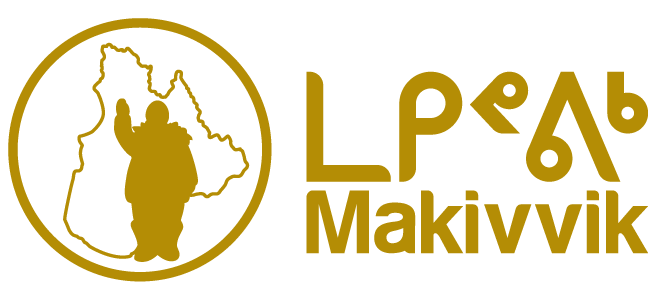Meaning: Place where there is a smell of rotten meat
Population: 2,129
 Located 4 km from Povungnituk Bay, on the north shore of the major river by the same name, this Inuit village is surrounded by an expansive plateau. It is a mixture of countless lakes and rivers, rich wildlife and precious arctic plants and flowers. Puvirnituq also witnesses every year the migration of the Leaf River caribou herd.
Located 4 km from Povungnituk Bay, on the north shore of the major river by the same name, this Inuit village is surrounded by an expansive plateau. It is a mixture of countless lakes and rivers, rich wildlife and precious arctic plants and flowers. Puvirnituq also witnesses every year the migration of the Leaf River caribou herd.
For several days every fall, thousands of caribou, their hooves pounding the frozen tundra, arrive and plunge across the Povungnituk River in a spectacular display.
Located 4 km from Povungnituk Bay, on the north shore of the major river by the same name, this Inuit village is surrounded by an expansive plateau.
Two explanations are commonly given for the peculiar name of this village. The first recounts, that many years ago when migrating caribou attempted to cross the river many were swept downstream and drowned. Their carcasses, it seems, were washed up on shore where they began to rot, producing a putrid odour. The other explanation of the site’s name tells how everyone living in the area were once the victims of a deadly epidemic.
In the end, there was no one left to bury the dead bodies. When the corpses began to decompose, the air was filled with an awful stench. The whole area, however, is know by a more pleasant name. Amaamatisivik means the place where women breast-feed their babies. According to legend, in this area the women would continually breast-feed their babies to keep them from crying and disturbing the herds of migrating caribou.
In 1921, the Hudson’s Bay Company (HBC) established an outpost at Puvirnituq. Inuit who came to trade their furs in these early years occupied various camps scattered throughout the region. In 1951, the HBC opened a general store in Puvirnituq and closed its posts at Qikirtajuaq (Cape Smith near Akulivik) and Kangirsuruaq. Inuit living in those areas had no other choice but to relocate in the following years to Puvirnituq.
In 1956, a catholic mission was founded in Puvirnituq. Two years later, Father André Steinman inspired residents to form the Carvers Association of Povungnituk which became the Co-operative Association of Povungnituk. Today a symbol of the community’s solidarity and independence, it is one of the most dynamic co-operatives which make up the Federation of Co-operatives of Northern Quebec.
At the beginning of the 21st century, Puvirnituq is the hub of the Hudson coast. The village’s airport is also the gateway to more remote communities. Puvirnituq and Kuujjuaq, Nunavik’s administrative centres, are also connected directly by plane two times a week.
ATTRACTIONS
- Puvirnituq Snow Festival: a celebration of traditions. The highlight of the Festival is the sculpturing contest where Inuit legends impressively take shape in their most natural element – snow.
- Tamusi Qumak artefacts: traditional tools, hunting and fishing gear, domestic items and clothing. Archaeological sites dating back to the Thule culture.
